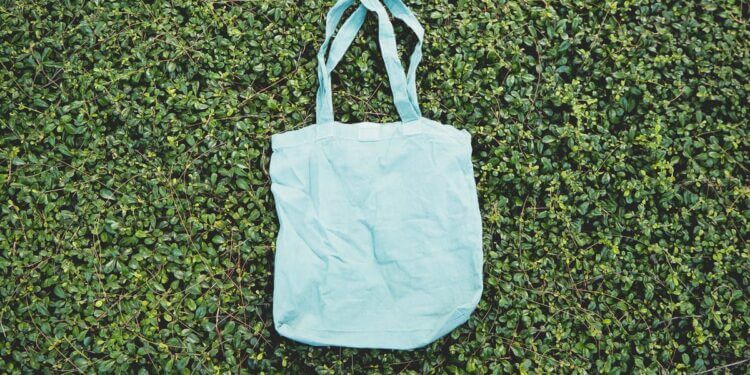Shopping sustainably in an attempt to do your part to fight climate change is an admirable ambition. But it’s also complicated and, if you aren’t aware, can be self-defeating.
It turns out, shoppers tend to cancel out the environmental benefits of their green purchases, sustainability experts have found. As a result, carbon-reducing tactics many shoppers rely on (and sometimes spend more on) don’t always pan out the way you might think.
For every sustainable shopping tactic consumers embrace, like buying second-hand or using your own bag, there’s often some other habit that cancels out the benefit, typically through buying more stuff. After all, sustainable products are still products, and they still “count” when it comes to your carbon footprint. Even reusable bag, which reduces the amount of throwaway plastic bags used, took resources and emissions to create.
The goal of green shopping is laudable: limit the amount of greenhouse gases emitted in the manufacturing and shipping of the products you buy. Collectively cutting down these emissions could have a large impact on climate change. A big portion of the climate-warming gases humans put into the atmosphere come from the manufacture of consumer goods. One study found that more than 60% of all greenhouse gas emissions are ultimately related to making and transporting the things we buy for our households and personal lives.
So is green shopping hopeless? No. It just requires a little additional thought. Though it’s tempting to label our shopping habits as “good for the environment” and move on with our lives, pairing those good intentions with some extra awareness is key to having the kind of effect you’re aiming for.
And there’s good news. If you’re already on the path to making sustainable changes by looking for sustainably made products, reusing bags, and buying second-hand, you can have a bigger impact if you just keep a few things in mind.
The second-hand goods market is a great place to start when trying to limit the carbon footprint of your shopping, according to sustainability experts. You can buy luxury goods from websites like ThredUp and RealReal. Refurbished electronics are available on eBay and directly from manufacturers. And you can make a great find at your local thrift store. These buys often take the place of a new product that would have created a gargantuan amount of emissions compared with its used counterpart.
But when you save money on something used, you might quickly start thinking about your next purchase.
For example, people who buy refurbished iPhones are prone to tacking on extra purchases with the money they save, according to research conducted in 2018 by a team led by Tamar Makov, who is now a sustainability researcher at Ben Gurion University of the Negev. Those “extras” have a carbon footprint too.
On average, the researchers found about a third of the emissions saved from buying a used iPhone was lost with additional purchases for the consumers they studied, and sometimes all the saved emissions were lost.
“If you turn down the volume on new goods, that’s a pretty solid win,” said Sandra Goldmark, author of the book, Fixation: How to Have Stuff Without Breaking the Planet. Instead of growing your shopping list because of all the affordable used items you’re getting, she added, “You need to be shifting that budget line.”
If you struggle to put less stuff in your shopping cart even though you’d like to, you’re not alone. There are a lot of strategies for being more intentional about your shopping, including expense tracking and limiting the amount of targeted marketing you see online.
A secondary benefit: You save a little money too.
There’s one sustainable item that lots of people likely have way more of than they need, probably without ever intending to: the cotton tote bag.
To be clear, reusable bags are good. They cut down plastic waste and pollution as well as emissions from making more bags. The catch is that cotton takes a lot of resources, especially water, to grow, and agriculture has its own carbon footprint. So if you have enough reusable bags, you can stop collecting them now. If you don’t have any yet, it’s fine to just reuse any plastic grocery bags you have lying around.
Generally speaking, reusing things you already own is a strong sustainability move. Right after doing a gut check on whether you really need something, the next essential step in limiting the impact of your shopping is to ask yourself if you already have something that fits the bill, Goldmark said.
For example, continuing to use your two-year-old Alexa-powered smart speaker is more sustainable than buying a new one that’s marked “Climate Pledge Friendly” on Amazon’s website. Amazon knows this, and the company says it intentionally builds its Echo, Kindle, and Fire products to last for years as part of its sustainability efforts.
Don’t take it as a personal failure if you’ve encountered these sustainable shopping pitfalls in the past. It’s a universal pattern, and sustainability experts call it the rebound effect.
Technology and science frequently make products more sustainable — they use energy more efficiently, require fewer resources to make or can be made of less carbon-intensive materials. But often people will then go ahead and use more of that product, like the purchaser of a more fuel-efficient car who then starts driving more.
A 2020 review of several studies found that improvements in technology have had almost zero effect on global emissions since 1970, according to a group of researchers led by Thomas Wiedmann, a professor of sustainability research in the School of Civil and Environmental Engineering at the University of New South Wales. As the production and use of technology became more efficient, global consumption shot up.
It’s a systemic problem we can’t get rid of simply by buying “environmentally friendly” products. It’s a culture-wide lifestyle shift, said Justin Bean, who helps companies develop sustainable business plans at Hitachi’s environmental business division.
Bean, also wrote a book on sustainable entrepreneurship called What Could Go Right? Designing Our Ideal Future to Emerge from Continual Crises into a Thriving World, added we’ll need to find a feeling of abundance through community rather than consumption to make this work.
“The less we consume, and the less we consume that’s unsustainable, is a good move,” he said. “And it’s better for our psychology.”





